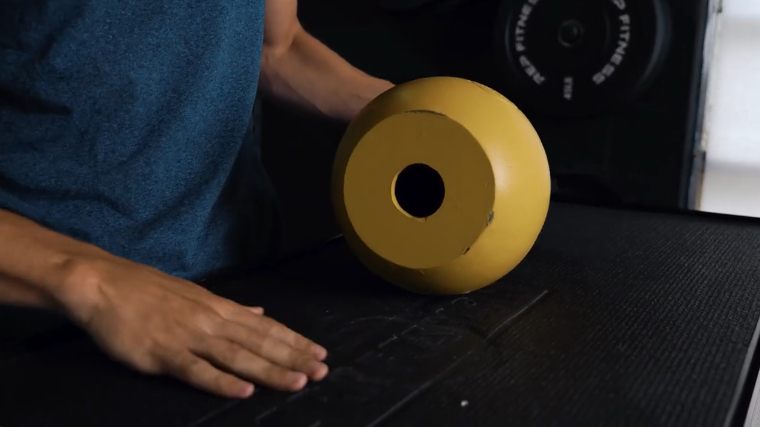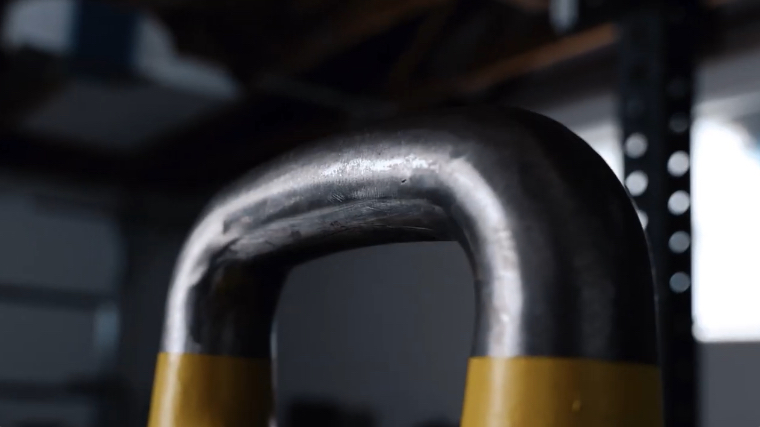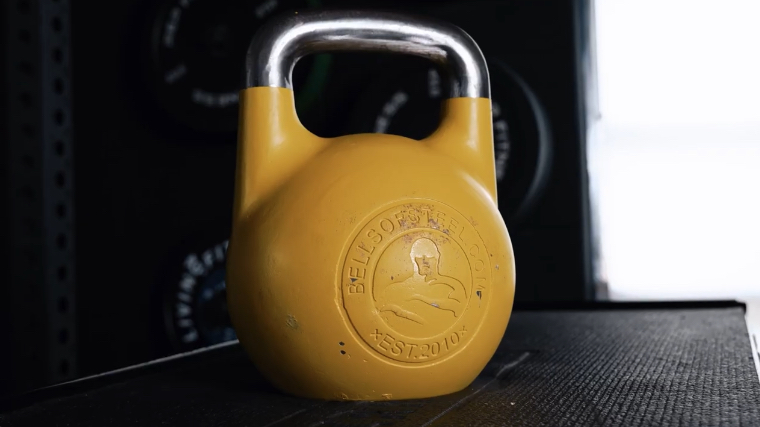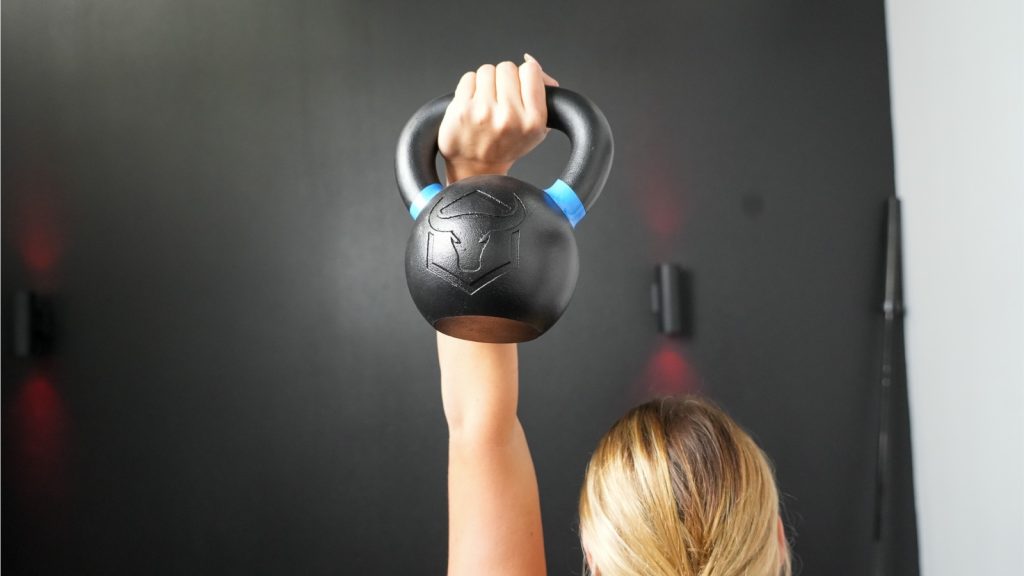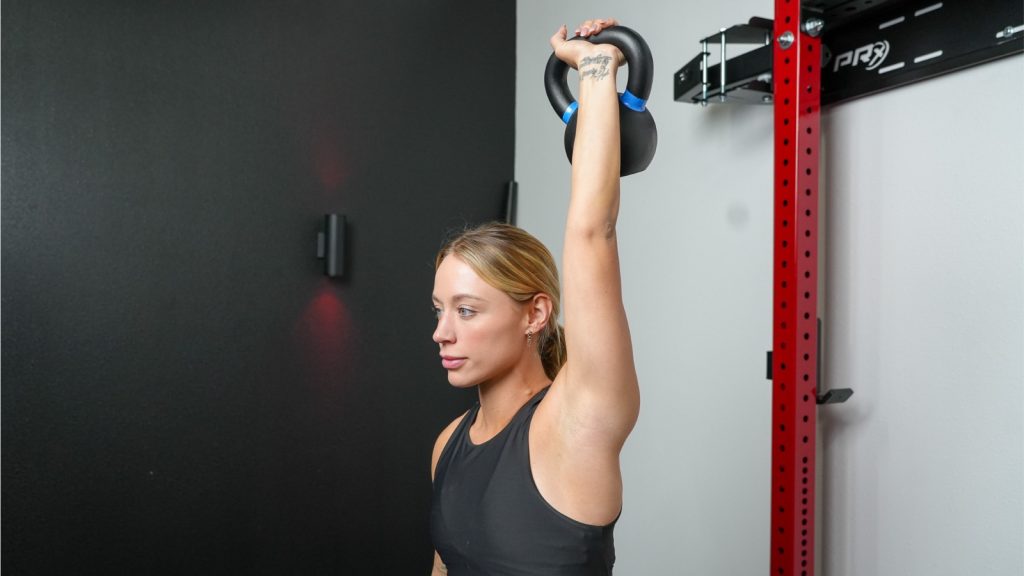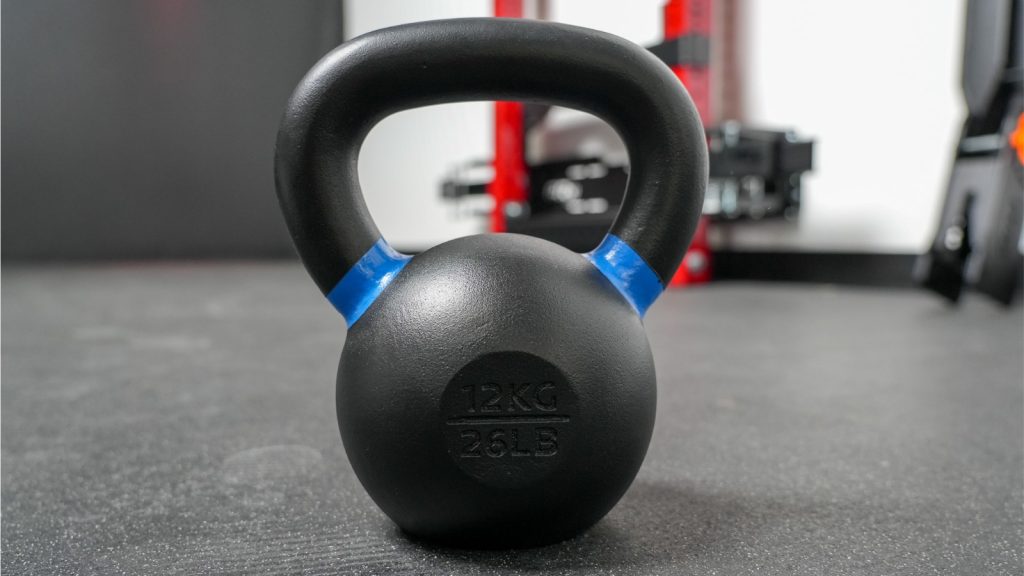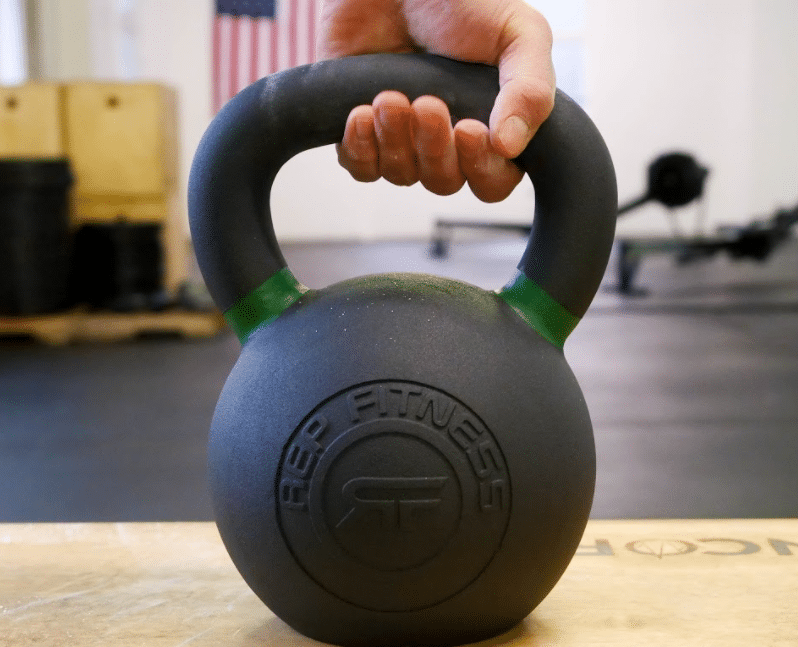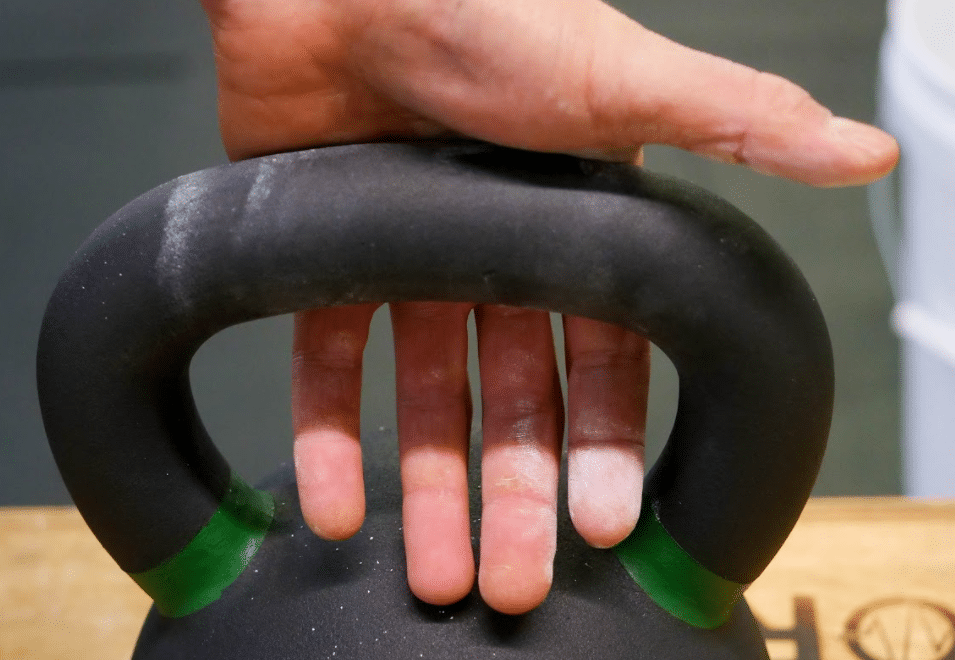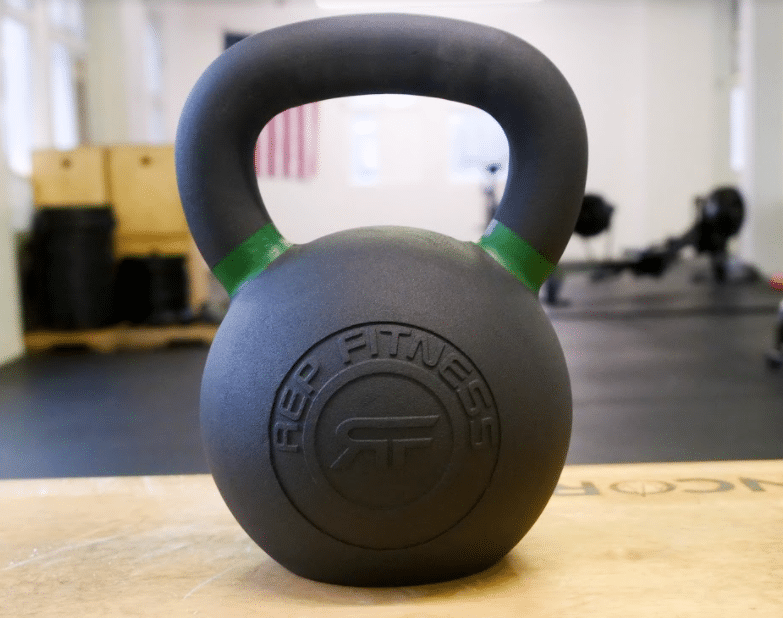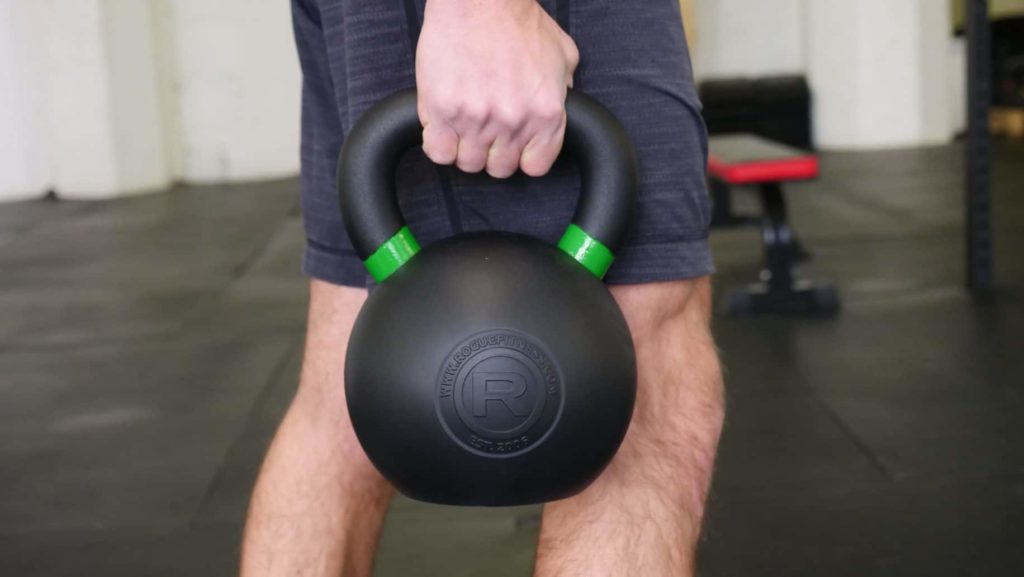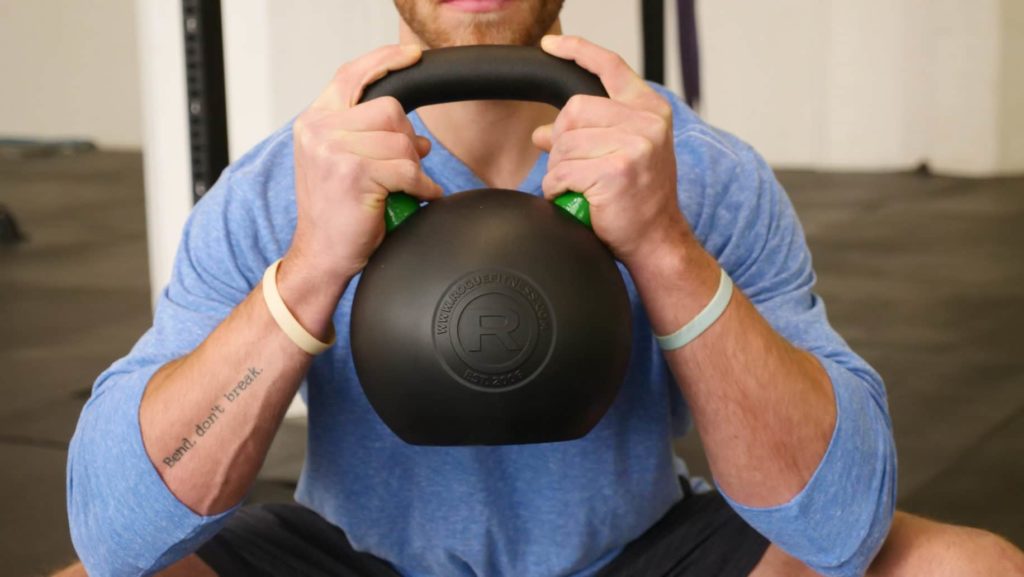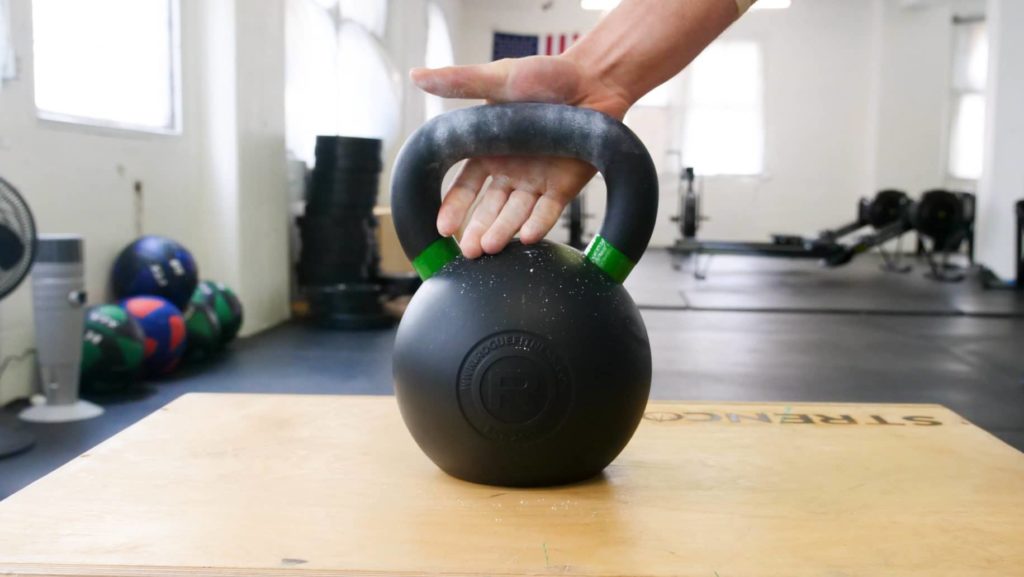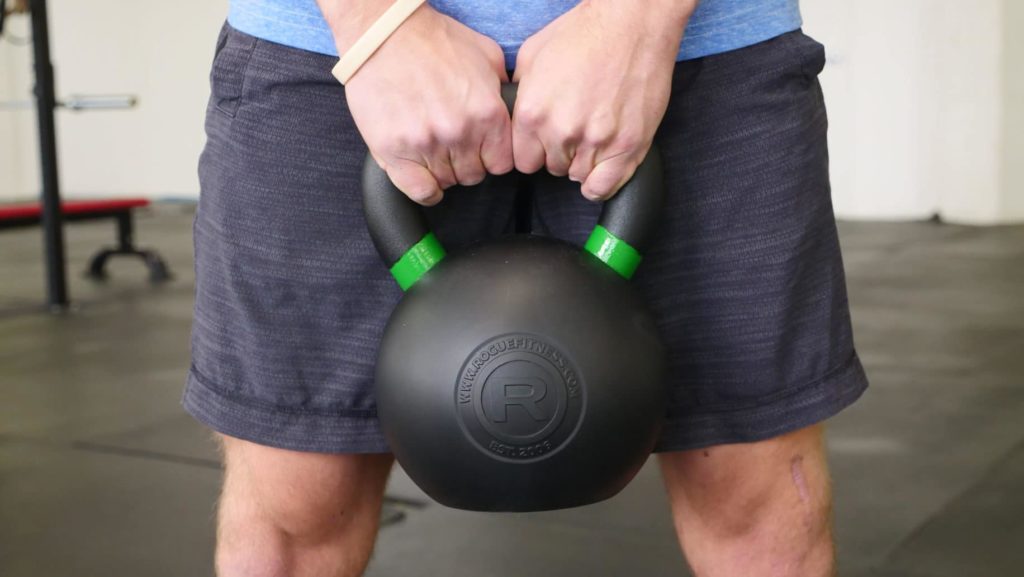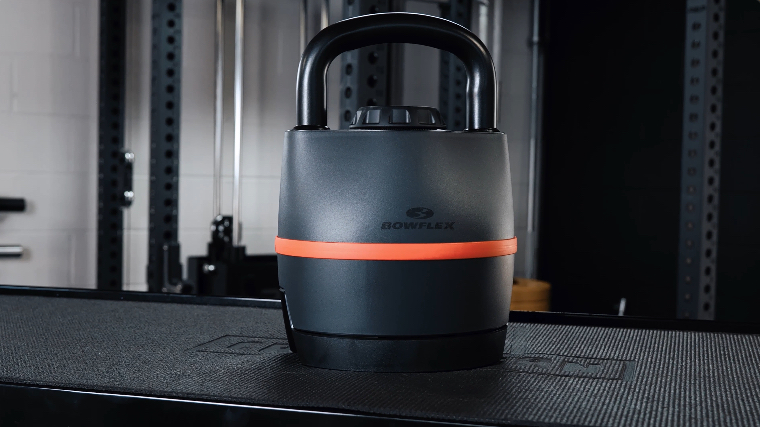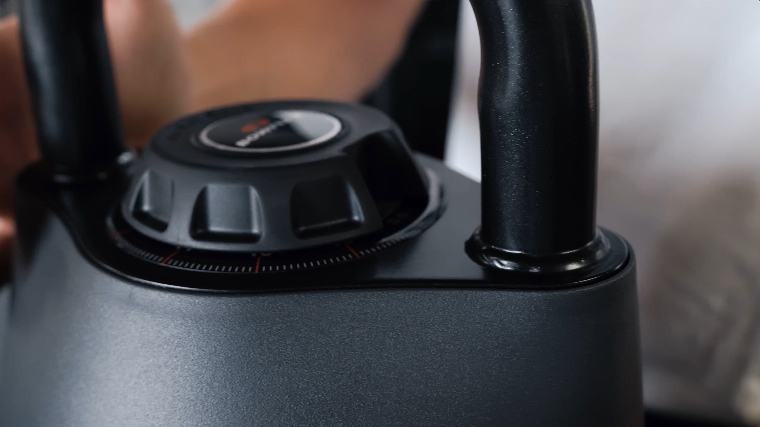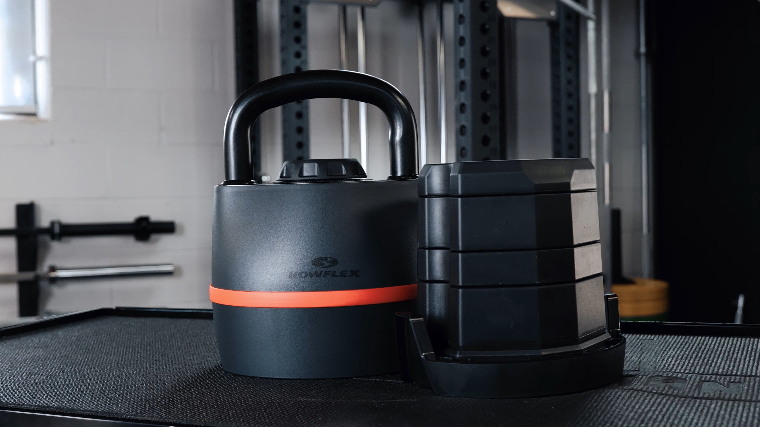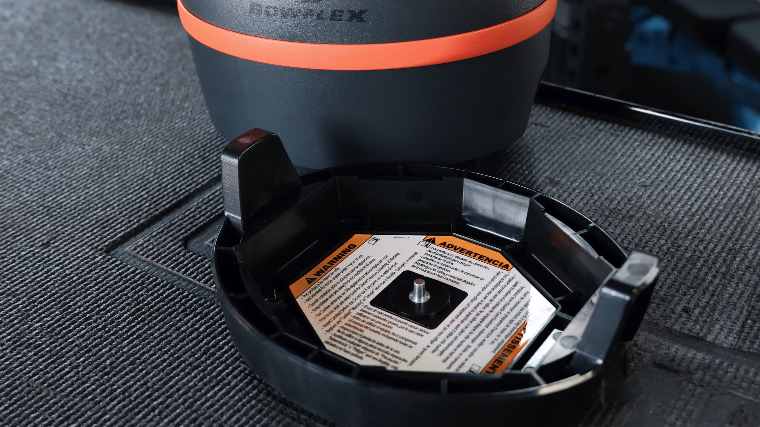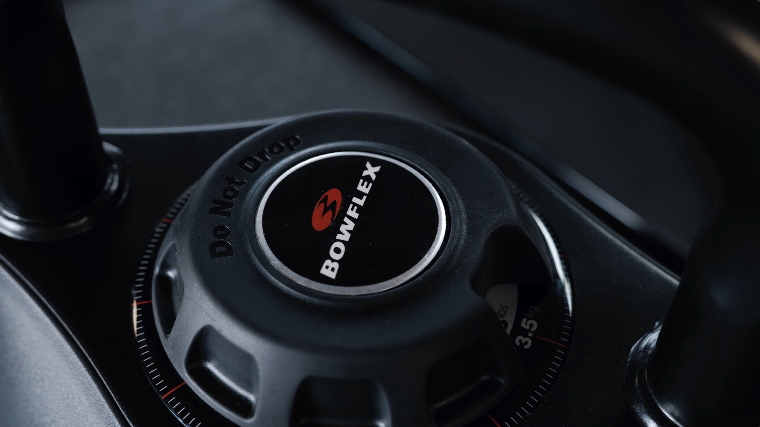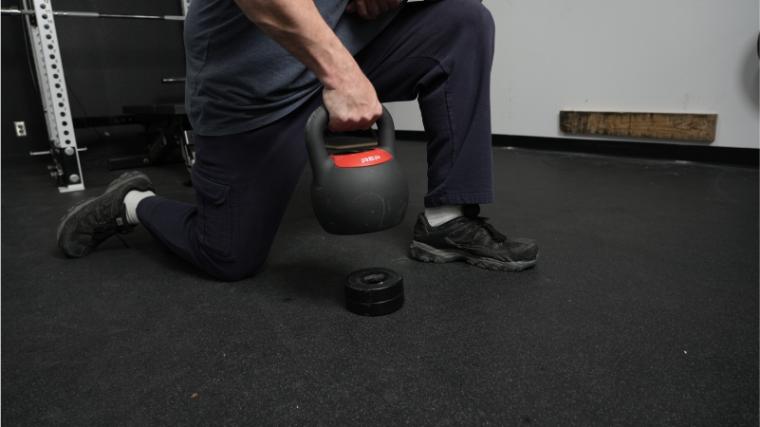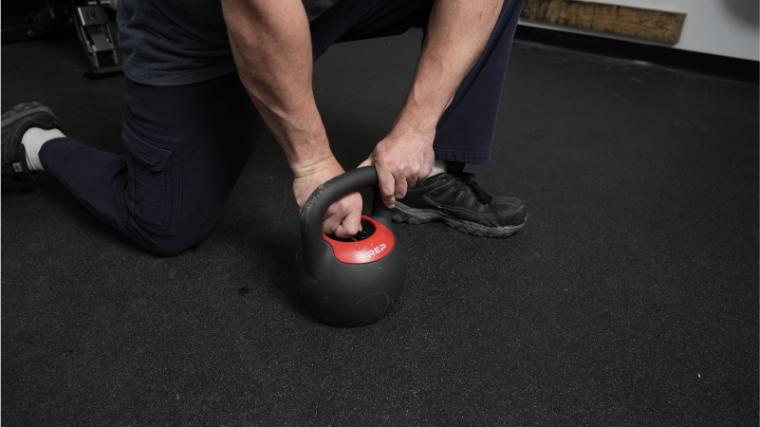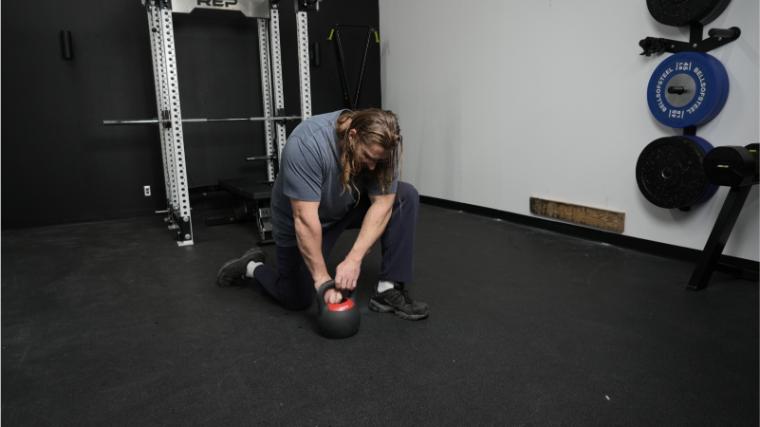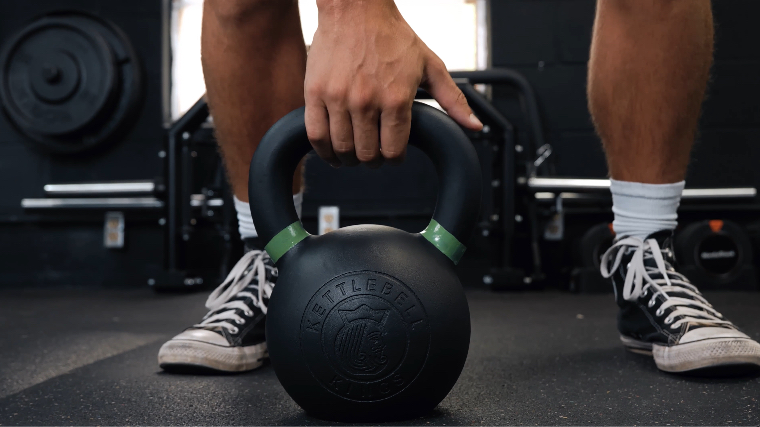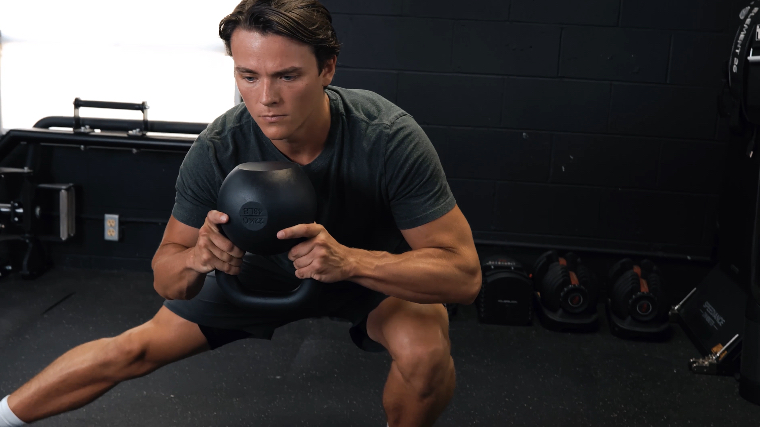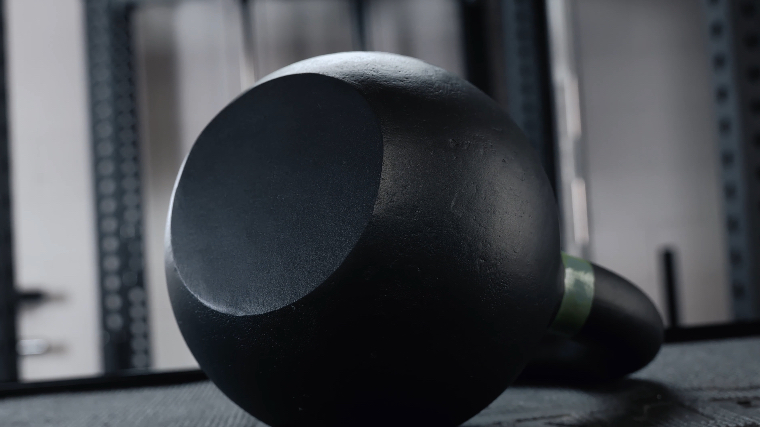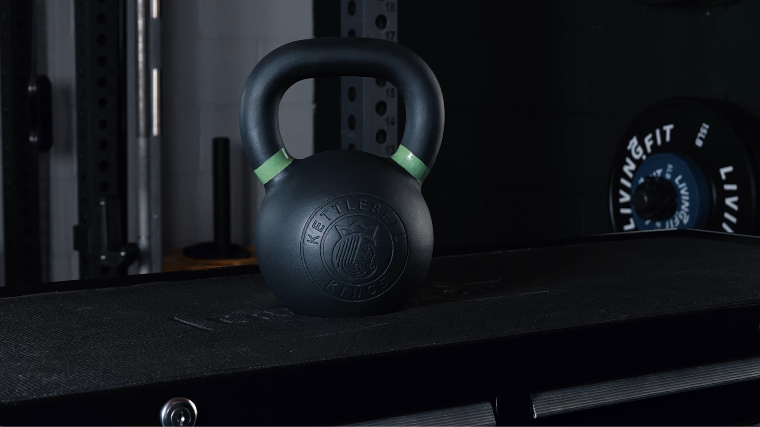“Strength training can be a high-quality workout discipline as it can help burn fat, build muscle, stimulate bone formation, and more,” states Dr. Christopher Mohr, PhD, RD. (1) While common tools of the trade include the best dumbbells, weight plates, and barbells, few pieces of training equipment can match the versatility of a kettlebell.
The best kettlebells on the market can help you train for muscle growth alongside balance, endurance, explosiveness, and even cardiorespiratory health. (2)
To help you choose the right kettlebell for your needs, we’ve tested over 20 different kettlebells in accordance with our equipment testing methodology. We rated these top kettlebells in a wide range of categories, including:
- Durability: Is the kettlebell constructed from high-quality materials with a resistant exterior coating?
- Available Weights: Are there enough weight options to support your training regimens?
- Grip and Handle: Does the handle allow you to keep a solid grip during your kettlebell flow?
- Value: Does the price match the kettlebell’s quality?
The BarBend team has helped connect over 1.2 million athletes with high-quality strength equipment over the years, so we’re confident in helping you find the best kettlebell for your fitness needs and wants.
The 13 Best Kettlebells of 2025
- Best Kettlebell Overall: Bells of Steel Competition Kettlebell
- Best Budget Kettlebell: Fringe Sport Prime Kettlebell
- Best Competition Kettlebell: Eleiko Competition Kettlebell
- Best Kettlebell for CrossFit: Iron Bull Kettlebell
- Best Kettlebell for Small Hands: Torque USA Kettlebell Package — Light
- Best Kettlebell for Cardio: REP Fitness Kettlebell
- Best Rubber-Coated Kettlebells: Rogue Rubber-Coated Kettlebells
- Best Powder-Coated Kettlebell: Titan Fitness Cast Iron Kettlebell
- Best Kettlebell for Beginners: Bowflex SelectTech 840 Adjustable Kettlebell
- Best Adjustable Kettlebell: REP Fitness Adjustable Kettlebell
- Best Kettlebell on Amazon: Lifeline Kettlebell
- Best High-End Kettlebell: Kettlebell Kings Powder Coat Kettlebell
- Best Kettlebell Set: Bells of Steel Powder Coated Kettlebell Custom Set
Best Kettlebell Overall: Bells of Steel Competition Kettlebell
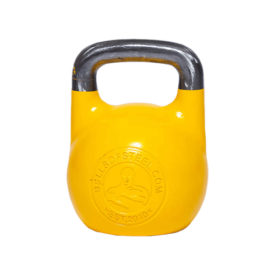
These kettlebells are up to competition-grade standards for GSU and IKFF use as well as meeting IUKL standards. All of the comp weight bells from 10kg to 32kg have international window size so you can train like you play.
Specs
- Weight Range: 4-48kg (9-106lbs)
- Highlights: Single-cast design, color-coded profiles, universal silhouette across weight range, competition-standard handle diameter
- Material: Cast steel
- Handle Diameter: 33-35mm (depending on chosen weight)
- Price: Starting at $54.99
Best Budget Kettlebell: Fringe Sport Prime Kettlebell
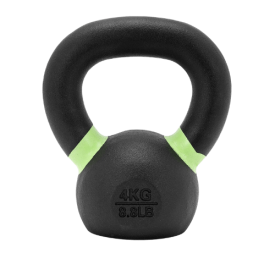
These kettlebells are a great budget pick, as they're priced cheaper than the market standard. Plus, they also have a protective powder coat and color-coded handles, so you get a bang for your buck.
Specs
- Weight Range: 4-48kg (9-106lbs)
- Highlights: Cast iron construction, color-coded handles, dual-stamp weight totals, textured powder coating
- Material: Cast iron with powder coat
- Handle Diameter: 31.75-41.65mm (depending on chosen weight)
- Price: Starting at $30
Best Competition Kettlebell: Eleiko Competition Kettlebell
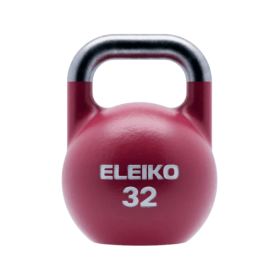
Made of cast iron with a powder-coated finish and a flat bottom, Eleiko's Competition Kettlebells are designed for serious trainees, with weights calibrated to +/- 200g for accuracy. The kettlebells are also color-coded for easy weight selection.
Specs
- Weight Range: 8-32kg (18-71lbs)
- Highlights: High-grade cast iron, molded construction, textured powder coat
- Material: Cast iron with powder coat
- Handle Diameter: 32mm
- Price: Starting at $85
Best Kettlebell for CrossFit: Iron Bull Kettlebell
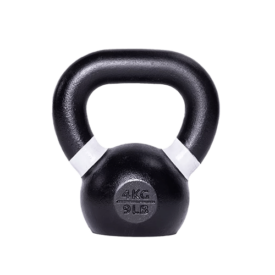
Forged from cast iron with a durable powder coat, these kettlebells are made to last. Plus, color-coded rings indicate each kettlebell's weight, making it easy to choose the right one for each workout.
Specs
- Weight Range: 4–40kg (9-88lbs)
- Highlights: Gravity-cast construction, color-coded handles, dual-stamp weight totals, textured powder coating
- Material: Cast iron with powder coat
- Handle Diameter: 30-40mm (depending on chosen weight)
- Price: Starting at $45
Best Kettlebell for Small Hands: Torque USA Kettlebell Package — Light
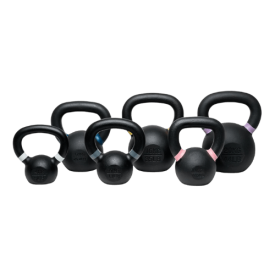
This kettlebell package is ideal for kettlebell (or strength training) beginners or for adults with smaller hands, considering the handles have a relatively small diameter.
Specs
- Weight Range: 4-20kg (9-44lbs)
- Highlights: Smaller handles, color-coded handles, dual-stamp weight indication, textured powder coat
- Material: Cast iron with powder coat
- Handle Diameter: Not listed online
- Price: Call for quote
Best Kettlebell for Cardio: REP Fitness Kettlebell
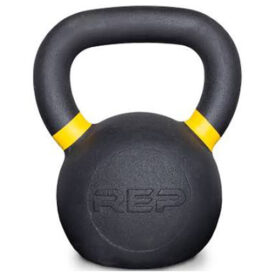
Rep Fitness makes a fully cast iron kettlebell that has a chip resistant coating and a handle that will fit a variety of user's hand sizes. We also appreciate that they list weights in both kilograms and pounds on every bell. Color coded handle markings make it easy to differentiate between weights.
Specs
- Weight Range: 1-48kg (2-106lbs)
- Highlights: Color-coded handles, dual-stamp weight totals, gravity die-cast, textured powder coating
- Material: Cast iron with powder coat
- Handle Diameter: 30-40mm (depending on chosen weight)
- Price: Starting at $19.99
Best Rubber-Coated Kettlebells: Rogue Fitness Rubber-Coated Kettlebells
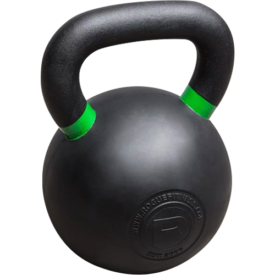
Rogue's Rubber Coated Kettlebell takes their standard model and adds a protective black urethane exterior coating. When you need to protect your floors during a workout, rubber-coated kettlebells are going cause less potential damage than iron or steel options. They're also great for movements that involve contact with the bell itself, like goblet squats.
Specs
- Weight Range: 26-70lbs
- Highlights: Rubber coating, single-piece casting, color-coded handles, dual-stamp weight totals, powder-coated handle
- Material: Cast iron, rubber base coating, powder handle coating
- Handle Diameter: 35.56-38.1mm (depending on chosen weight)
- Price: Starting at $84
Best Powder-Coated Kettlebell: Titan Fitness Cast Iron Kettlebell
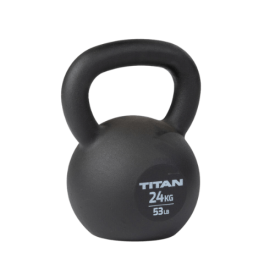
These kettlebells are made with highly durable cast iron and they have a black powder coat, too, which can help keep the weight protected from rust, corrosion, and paint chipping as you exercise.
Specs
- Weight Range: 4-32kg (9-70lbs)
- Highlights: One-piece design, textured powder coating, debossed weight indications
- Material: Cast iron with powder coat
- Handle Diameter: 26-39mm (depending on chosen weight)
- Price: Starting at $39.99
Best Kettlebell for Beginners: Bowflex SelectTech 840 Adjustable Kettlebell
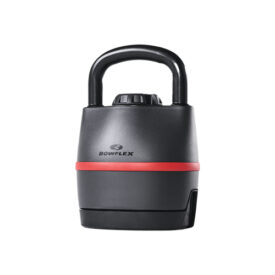
This adjustable kettlebell system replaces six individual kettlebells and features an easy-to-use dial to adjust the weight so you can get straight to your workouts.
Specs
- Weight Range: 8-40lbs
- Highlights: SelectTech dial adjustments, 6-in-1 weight range, built-in stand
- Material: Composite
- Handle Diameter: Not listed online
- Price: $149
Best Adjustable Kettlebell: REP Fitness Adjustable Kettlebell
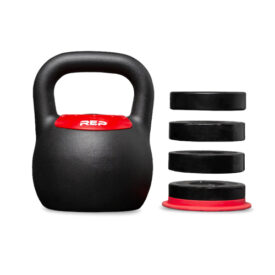
These competition-style adjustable kettlebells are made from cast iron and feature a powder coat. With three buying options available, there is an increased chance you can find an option that meets your requirements.
Specs
- Weight Range: 8-16kg, 16-24kg, or 20-40lbs
- Highlights: 5-in-1 adjustable design, center locking dial, cast iron shell, powder coat exterior, flat base
- Material: Cast iron with powder coat, plastic
- Handle Diameter: Not listed online
- Price: Starting at $149.99
Best Kettlebell on Amazon: Lifeline Kettlebell
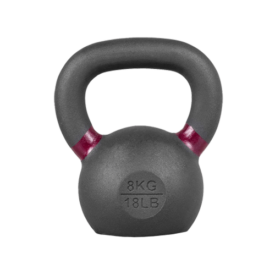
These kettlebells are made well with a durable powder-coat finish that provides a great grip, even when not using chalk. The color-coded handles make it easy to grab the right weight quickly.
Specs
- Weight Range: 4-44kg (9-79lbs)
- Highlights: Single-cast construction, textured powder coat, machined base, dual-stamp weight indication, color-coded handles
- Material: Cast iron with powder coat
- Handle Diameter: 32-39.9mm (depending on chosen weight)
- Price: Starting at $34.82
Best High-End Kettlebell: Kettlebell Kings Powder Coat Kettlebell
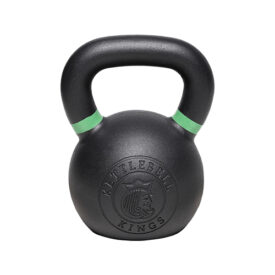
These single-cast powder-coated kettlebells undergo a gravity-casting process, leading to an accurate weight and an evenly balanced kettlebell.
Specs
- Weight Range: 4-92kg (9-203lbs)
- Highlights: Single-cast design, refined powder coating, color-coded handles, large weight range
- Material: Cast iron with powder coat
- Handle Diameter: 30-47.5mm (depending on chosen weight)
- Price: Starting at $81.51
Best Kettlebell Set: Bells of Steel Powder-Coated Kettlebell Custom Set
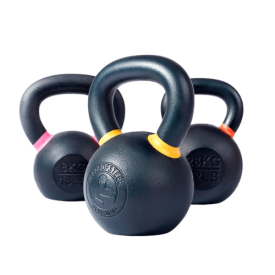
For most athletes, a single kettlebell probably won't cut it. But with this pick from Bells of Steel, you can build your own custom set, selecting only the weights you need.
Specs
- Weight Range: 4-40kg (9-88lbs)
- Highlights: Single-cast design, color-coded handles, textured powder coat, lifetime warranty
- Material: Cast iron with powder coat
- Handle Diameter: 30-39mm (depending on chosen weight)
- Price: Varies by set
How We Tested and Chose the Best Kettlebells
BarBend‘s team of certified personal trainers, weightlifting coaches, and fitness fanatics tested more than 20 different kettlebells, scoring each on a scale of 1 (oof) to 5 (yay) in areas such as durability, versatility, and value in accordance with the BarBend equipment testing methodology. In building this list, these are the qualities we considered.
- Durability: We looked at each kettlebell’s coating, as this, like the casting process, can be a signal for long-term durability. A great coating can provide a better grip and be less prone to chips or excessive wear and tear.
- Performance: These are versatile pieces of workout equipment, so they need to perform well in multiple settings with both chalk and non-chalk users. Every handle’s coating and diameter can impact grip, so we spent extra time assessing each profile’s ability to support extended use.
- Weight Options: We took beginners and competitive athletes into consideration as we tested different weights and browsed resistance options.
- Warranty: We looked through warranties of different products, selecting kettlebells that come with some sort of protective warranty to shield against non-accidental damage.
- Grip and Handle: While prioritizing zero-slip grips, we considered a variety of handle diameters and designs since some athletes prefer a thicker handle diameter while others like a thinner grip. We provided options with smaller and wider windows to suit all fitness needs.
- Value: Let’s not beat around the bush here — investing in the best home gym equipment is a pretty big deal, and you (obviously) want the most for your money. By taking the above characteristics into account and comparing them with the listed MSRP of each bell, we tried to identify the benefits versus the cost.
Benefits of Kettlebells
“For starters, kettlebell training comes with all of the usual benefits of resistance training: increased muscle mass, strength, bone density and bone health, improved mental health and confidence, balance and coordination, and independence into old age,” says Amanda Capritto, CPT, CES, CNC, CF-L1, CSNC. (1) That said, though, these unique training tools can offer extra perks and workout potential that you just can’t find in other silhouettes like dumbbells or weight plates. Here are some of the top benefits of kettlebell training.
- Builds Strength: As a piece of resistance equipment, kettlebells can help you gain strength. Regular strength training can help you develop stronger bones, sharpen your brain, and potentially manage chronic symptoms. (1) “You also don’t need a lengthy workout to potentially achieve hypertrophy (muscle growth,” notes Dr. Christopher Mohr, PhD, RD. “Current research suggests that even low volume workouts of high-intensity training, roughly two the three sets of a given exercise at six to 12 reps, can lead to potential muscle growth.” (3)
- Versatility: There are plenty of exercises you can do with a kettlebell and they can help you get an excellent cardio workout, build your balance, and improve your muscular stability, too. “I love kettlebells for their ability to challenge balance, coordination, and stability, in addition to strength. That’s not something you can always achieve with other machines or free weights,” says Capritto.
- Space Saving: Compared to some of the best power racks, for instance, kettlebells are relatively small and easy to store when not in use. For those who need to save space or don’t have a super high budget, this exercise tool fits the bill.
What to Consider Before Buying Kettlebells
So, you’re interested in a new kettlebell. Here are some personal considerations that should be acknowledged before investing.
Your Training Style
You need to consider how and why you train (and your training frequency) before purchasing a kettlebell. If you’re a kettlebell athlete, for example, you’ll likely need a specific kettlebell of high quality. Beginners can get away with a cheaper, more basic version, while a more experienced lifter may want to invest in a nicer construction. Or, if you engage in CrossFit or cardio workouts, then you’ll need a more comfortable bell with an outstanding grip for high-rep sets.
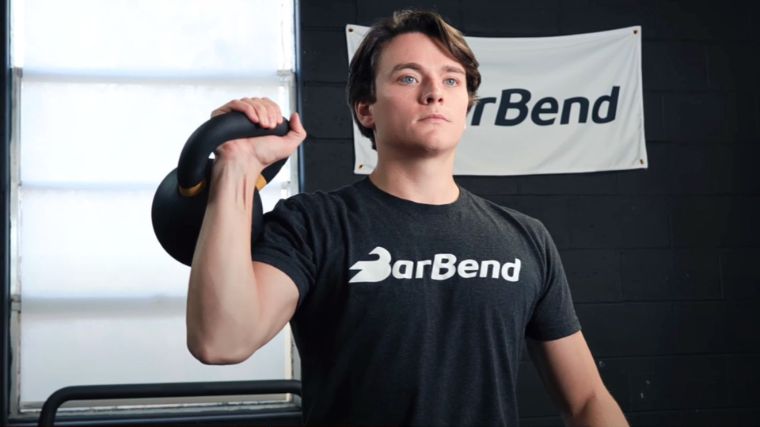
Assess your workouts honestly, and then look closer at a kettlebell’s features before clicking “Buy Now.” Kettlebells can be a great, versatile piece of equipment when you can only get one or two new items for your home gym — but they aren’t the cheapest items, so you want to get it right before you shell out for one.
Price
Most kettlebells are going to be priced closely. So, we’ve made sure that the more expensive options are worth the uptick in price while the cheaper options are still of a certain quality. We take factors like construction, warranty, customer reviews, and our personal testing process all into consideration when looking at a kettlebell’s price tag.
Type of Kettlebell
Different types of kettlebells are suited to different types of athletes. Training kettlebells can be great all-around options for everyday athletes. These are the kettlebells you’ll find in your local gym and are generally the most cost-friendly.
Competition kettlebells are best for those who are planning to compete in the sport. These can be pricier and generally meet sport standards to give you an accurate representation of the weights used professionally.

You can also consider an adjustable kettlebell. These can be ideal for beginners or those who are limited on space. They offer a pretty broad range of weights within one single mechanism and they’re usually cost-effective.
Weight Options
Before you order just any kettlebell, think about the weight options at your disposal. Choose weights that are suited to your fitness level and maybe consider ordering one or two heavier kettlebells to allow room for progression.
Handle
Handles can vary from one kettlebell to another. Typically, you want a handle that has some sort of coating, as these can hold chalk pretty well to prevent slipping. However, there are handles with wider and smaller windows, too. If you’re someone who has larger hands or loves cardio training, a wider handle window is ideal.
Coating
We highly recommend choosing a kettlebell with some sort of protective coating across the exterior. After sitting for a while, kettlebells can rust or corrode but a coating can help increase your weights’ longevity.
How Much Do Kettlebells Cost?
Similar to the best dumbbells, kettlebells can range greatly in price. Factors such as coating, handle quality, and adjustability may impact how much you pay for your desired kettlebell. You should also keep in mind that different weights of kettlebells will cost different amounts (a 52-pound kettlebell will cost more than an 18-pound kettlebell). Competition-style kettlebells that have been approved for athletic competition may also have a heftier price tag. Here’s a quick glance at how our top kettlebell picks stack up to each other in price.
| Best Kettlebell Overall | Bells of Steel Competition Kettlebell | 4-48kg (9-106lbs) | Starting at $54.99 |
| Best Budget Kettlebell | Fringe Sport Prime Kettlebell | 4-48kg (9-106lbs) | Starting at $30 |
| Best Competition Kettlebell | Eleiko Competition Kettlebell | 8-32kg (18-71lbs) | Starting at $85 |
| Best Kettlebell for CrossFit | Iron Bull Kettlebell | 4–40kg (9-88lbs) | Starting at $45 |
| Best Kettlebell for Small Hands | Torque USA Kettlebell Package — Light | 4-20kg (9-44lbs) | Call for quote |
| Best Kettlebell for Cardio | REP Fitness Kettlebell | 1-48kg (2-106lbs) | Starting at $19.99 |
| Best Rubber-Coated Kettlebell | Rogue Rubber-Coated Kettlebells | 26-70lbs | Starting at $84 |
| Best Powder-Coated Kettlebell | Titan Fitness Cast Iron Kettlebell | 4-32kg (9-70lbs) | Starting at $39.99 |
| Best Kettlebell for Beginners | Bowflex SelectTech 849 Adjustable Kettlebell | 8-40lbs | $149 |
| Best Adjustable Kettlebell | REP Fitness Adjustable Kettlebell | 8-16kg, 16-24kg, or 20-40lbs | Starting at $149.99 |
| Best Kettlebell on Amazon | Lifeline Kettlebell | 4-44kg (9-79lbs) | Starting at $34.82 |
| Best High-End Kettlebell | Kettlebell Kings Powder Coat Kettlebell | 4-92kg (9-203lbs) | Starting at $81.51 |
| Best Kettlebell Set | Bells of Steel Powder Coated Kettlebell Custom Set | 4-40kg (9-88lbs) | Varies by set |
The Best Kettlebell Exercises
It’s tough to say exactly which kettlebell exercises are best. Really, it depends on your training goals and experience levels. However, assuming you want to focus on compound movements that will bolster your strength, power, and conditioning, the total-body moves below can be a great starting point. Or, isolate certain muscle groups if you want a more specified workout.
Upper-Body Kettlebell Exercises
Lower-Body Kettlebell Exercises
Kettlebell Core Exercises
Kettlebell Flows Explained
A kettlebell flow is like a kettlebell circuit — stringing together a bunch of different kettlebell movements. The key difference is that with a circuit, you will be putting the bell down between moves and potentially resting a bit in-between exercises. With a kettlebell flow, your goal is to literally flow right from one move into the next without stopping or putting the bell down. So, you might perform a small set of push presses, use the last rep to start an overhead carry, and flow from that right into a small series of kettlebell snatches.
When you’re looking to design your own kettlebell flow, don’t be afraid to look a little silly for a hot second — before you even pick up the weight, simulate the movements to make sure that they can, in fact, flow seamlessly into one another. You’ll need at least one clean programmed in there if you want to transition from a Romanian deadlift to a strict press, for example, so make sure you include all those elements.
Kettlebells Vs. Dumbbells
If you’ve got a limited budget — or only a small amount of space — you might have to make the sad choice of buying a dumbbell versus a kettlebell. And while we never want to put two excellent pieces of gym equipment against one another (dumbbells are spectacular training tools), it’s worth noting a couple of things about the versatility of kettlebells:
- Due to their off-balance shape, kettlebells can engage more of your stabilizer muscles during lifts.
- Many kettlebell movements are ballistic in nature, meaning that they build power, strength, coordination, and conditioning all at once.
- Kettlebells can develop lifters’ grip strength due to the constant pressure needed to stabilize an offset load while it’s rapidly moving. Think about the work you have to do to keep a bell on a controlled path during swings, cleans, and snatches.
- Kettlebells don’t require a lot of space, and a single implement can be used for a variety of moves and training goals.
- Even the most cardio-heavy kettlebell lifts can be low-impact, meaning that you can go heavy, hard, and ballistic without taxing your joints too much.
The Right Way to Hold a Kettlebell
For a lot of kettlebell lifts, you’ll grip it in a similar way to gripping a dumbbell — in the middle of the handle, keeping your fingers light. It might feel scary at first to not choke the darn thing, but it’s much better for your wrist health to practice gentleness in your grip during moves like swings.
For more complex lifts like cleans, snatches, and Turkish get-ups, you want an offset grip. To avoid the painful flopping of the kettlebell onto your wrist or forearm, don’t grab it right in the center. Instead, tuck the pad between your index finger and your thumb against the curve of the handle.
You can also get creative. A bottoms-up grip challenges your forearms, wrists, fingers, and shoulders. Holding the bell around the body can help emphasize your shoulders a bit more when front-loading your goblet squat and can provide different angles for overhead and floor presses.
Best Kettlebells FAQs
How much do kettlebells cost?
Kettlebells range in price from around $30 to $50 for a relatively light non-competition option to several hundred dollars for heavier, competition-spec bells. If you’re just starting out with kettlebells, you can expect to spend around $200 to $300 for a few lighter, budget-friendly options to give you a taste for kettlebell training. If you like it, you may want to expand your weights or opt for one or two higher-end kettlebells.
What is the best kettlebell to buy?
The answer to that depends on what your goals and budget are. We’re fans of Bells of Steel Competition Kettlebells because they’re high-quality, rather affordable for how well-made the product is, and color-coded, so you can easily switch between weights without fumbling around trying to find the right kettlebell.
Can I integrate kettlebells into my weight training?
If you’re buying a kettlebell to integrate it into an existing training program, you’re probably wondering how much kettlebell work is too much when you’re a powerlifter, weightlifter, or otherwise focused on non-kettlebell aspects of training. The answer: there are always ways to integrate kettlebell work into your lifting that will not take away from recovery.
If you’re not going super heavy, kettlebell swings and Turkish get-ups can be great ways to grease the grooves of positive movement patterns — making kettlebells a great active recovery tool for your “off” days. You can also integrate moves like light kettlebell halos between upper body lifts to keep your shoulders mobile and ready for the pressure that barbell work can put on them. And, if you’re looking for cardio that doesn’t involve endless runs, look no further than a solid kettlebell cardio session as either a finisher or cardio day all on its own.
What weight kettlebell should I get?
When you’re considering what kettlebell weight to buy, you need to balance your goals against your “limiting lifting factor.” What’s the exercise you know you want to do with your kettlebell that you will need the lightest weight for? It might be all well and good to spring for a 32-kilogram bell because you can do your lower body work with it (and maybe floor presses). But if you know you want to overhead press and can’t do that with 70 pounds, there’s your limiting factor.
In other words, you might want a heavy bell for all your lower body training needs. That said, if you want to also be able to get some solid upper body lifting in with your kettlebell, make sure you’re taking that into account. It’s a balancing act that will require some deep contemplation and programming creativity, but it’ll be worth it in the end.
What makes a quality kettlebell?
Here are three main factors to consider when looking for a quality kettlebell:
– First, a quality kettlebell has a single-cast construction, as this means the kettlebell was created with one cast and isn’t pieced together with multiple types of metals. These models are more durable.
– Second, the coating is durable, chip, and rust-resistant. A strong coating can do wonders for prolonging your investment.
– Lastly, a quality kettlebell has a flat bottom finish and is void of seams and other signs of construction imperfections.
How should I care for my kettlebell?
For the most part, kettlebells take care of themselves if you store them in a dry spot — especially if they’ve got rubber coating. You might opt to check your bell over every few months to lightly sand down places where it might chip if you’re training outside or in a garage and have been letting it hit concrete when you set it down. But, for the most part, kettlebells are pretty low maintenance.
If you opt to strip the rust-resistant coating away from your competition kettlebell to give it a more rugged grip, make sure you’re protecting your kettlebell from rust when you’re not using it (pro-tip: wipe off your lingering sweat after each session).
What size kettlebell should I get?
This depends on the types of workouts you like and your current fitness level. If you only want to buy one kettlebell, we recommend an adjustable option, as they’re more versatile for different workouts.
If you plan to buy a set, we recommend getting a few that can work for both upper- and lower-body workouts. Also consider getting a few that are challenging for your current fitness level to give you room to grow.
References
- Westcott, W. L. (2012). Resistance training is medicine. Current Sports Medicine Reports, 11(4), 209–216. https://pubmed.ncbi.nlm.nih.gov/22777332/
- Jaiswal, P. R., Ramteke, S. U., & Shedge, S. (2024). Enhancing athletic performance: A comprehensive review on kettlebell training. Cureus. https://pmc.ncbi.nlm.nih.gov/articles/PMC10910645/
- Krzysztofik, M., Wilk, M., Wojdała, G., & Gołaś, A. (2019). Maximizing muscle hypertrophy: A systematic review of advanced resistance training techniques and methods. International Journal of Environmental Research and Public Health, 16(24), 4897. https://pmc.ncbi.nlm.nih.gov/articles/PMC6950543/
